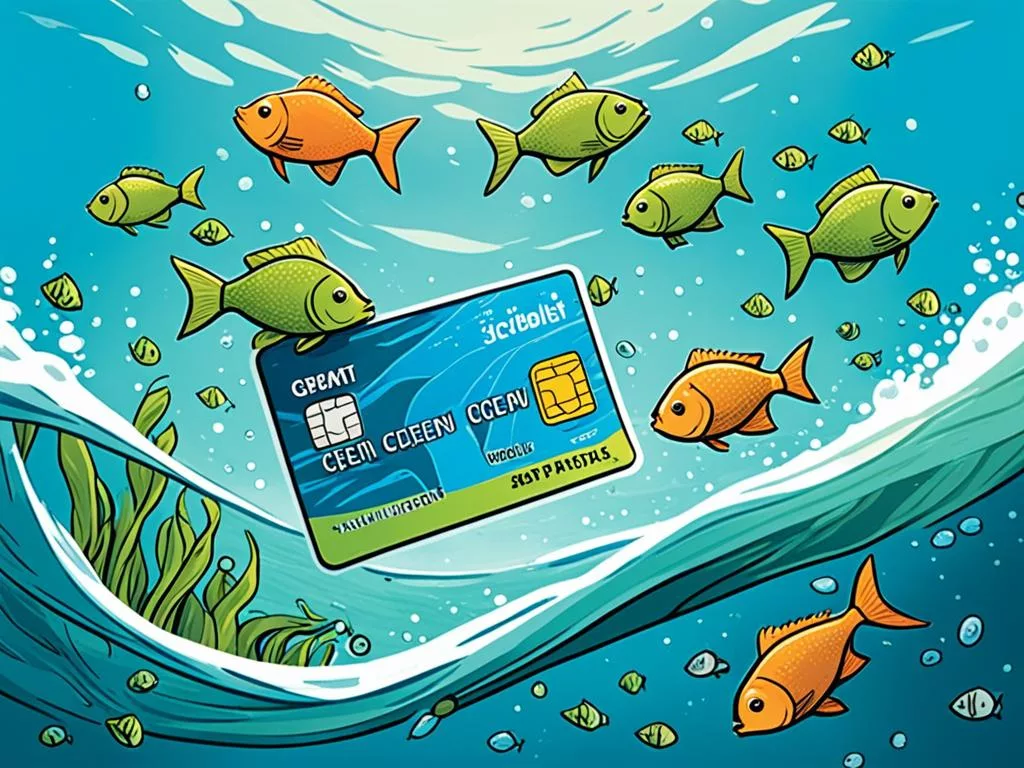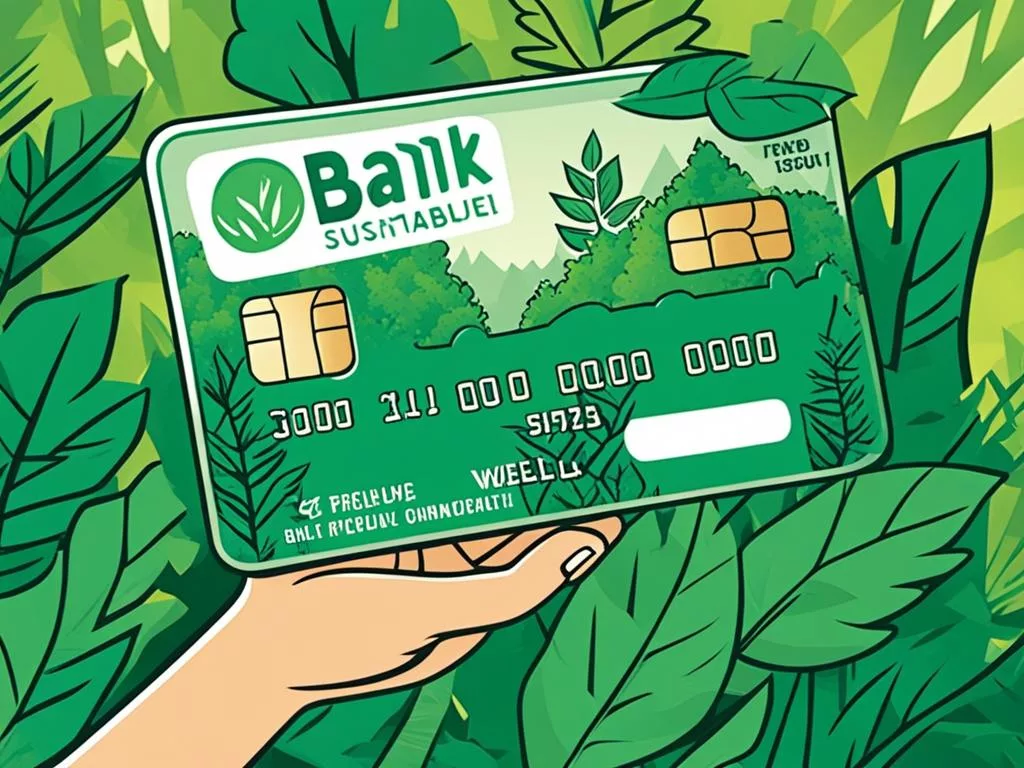I have been exploring eco-friendly payment methods lately. I found a guide to eco-friendly debit cards very helpful. These cards are not just a way to spend money but also a commitment to help the environment. U.S. Bank, for example, makes cards from reclaimed ocean plastics. This is important because over 12.7 million metric tons of plastic end up in our oceans every year. By choosing this sustainable option, I am doing my part to reduce plastic waste in the ocean.
Not only does using these cards help the environment, but they are also convenient and secure. They come with advanced contactless features. Every time I see the diving turtle or serene beach design on my card, I’m reminded of my commitment. It motivates me to keep making eco-friendly choices in my daily life.
I’ve also learned about the benefits of using eco-friendly debit cards. For instance, even though Aspiration is discontinuing its Aspiration Zero credit card on May 3, 20231, there are still great options out there. The FutureCard Visa Debit Card is one such option. It offers up to 6% cash back on eco-conscious spending, such as public transportation1.
While some other cards might offer higher cash-back rates, I prefer the FutureCard. It aligns with my sustainability values. Plus, I get statement credits reflecting my cash-back rewards each billing cycle1. This choice shows how picking eco-friendly debit cards can do good for the environment and also benefit me financially.
The Rising Tide of Ocean Plastic and My Choice for a Green Payment Method
Plastic waste is a major threat to our oceans and marine life. It needs urgent action. I choose to use environmentally friendly debit cards to help. Every time I shop with my green card, I feel good about my choice. The scary fact that plastic might outnumber fish by 2050 pushes me to do my part.

I was impressed to learn about U.S. Bank and First Mile’s eco debit cards. They stop more than a ton of plastic from polluting the sea for every million cards made. This is a powerful way to reduce waste and inspire others to do the same.
I’ve also been inspired by the green efforts of universities and companies. The University of Maryland and Stanford University have used millions of kilowatt-hours of green power2. Dell is making laptop packaging out of ocean plastics3. These examples show how big changes can happen.
My choice to use a green debit card is small but meaningful. Schools like Emerson College and Gettysburg College are using lots of green power too2. Every green choice adds up in the fight to save our planet.
| Institution | Conference | Green Power Usage (kWh) |
|---|---|---|
| University of Maryland | Big Ten | 146,567,825 |
| Stanford University | Pac-12 | 159,626,907 |
| Emerson College | New England Women’s and Men’s Athletic | 25,000,000 |
| Gettysburg College | Centennial | 20,000,000 |
By choosing an ethical debit card, I support causes like Adrian Grenier’s Lonely Whale Foundation3. Each small decision we make can help fight the environmental crisis. Together, we can make a big difference.
Guide to Eco-Friendly Debit Cards
On my path to living more green, I’ve looked at all things in my life, including how I spend money. Switching to an eco-friendly debit card was a big step. Since 2019, over 30 million such cards have been made, showing many people want to make a difference with their money choices.
Imagine that the world has about 55 billion payment cards out there. This makes it super important to think about the environment when choosing a card. I chose a card made of recycled stuff or materials that help the ocean. This move helps lead the charge in using better materials for our cards
Did you know that plastic in cards can be swapped for something less harmful? This change saves a lot of energy and lowers my carbon footprint.
I’m not alone in wanting products that are good for the earth. Banks that offer green cards might get more customers because people care about the environment
Choosing these cards also means thinking about safe spending online. NTT DATA Payment Services keeps digital payments secure with strong encryption.

Also, the sheer number of plastic cards made each year shows we need to change. Each card adds up to a lot of plastic waste over time—plastic that we often throw away after just a few years
I’ve learned it’s key to know what my card is made of. Choosing recycled materials or plant-based plastics is a smart move.
There’s more to learn about green cards. For example, wooden cards are cool because they’re made from a resource that grows back.
By sharing my journey, I’m adding to a bigger movement for a greener world. It’s about making each choice count towards a better future, one purchase at a time.
Sustainable Banking Options: Benefits Beyond the Environment
I’m exploring sustainable banking and finding lots of eco-friendly debit cards. They’re changing the finance world. Choosing these cards shows my support for the environment. It also matches the growth of “green” banking products in North America. Big and small banks are adding these options. This is a big step towards making green practices common in all banks4.
Eco-friendly cards also push banks to work greener inside5. By using these cards, I help banks keep up their eco-friendly habits4. They’re part of bigger plans to make banks more responsible. In fact, 78% of bankers are working on it5. These efforts help build a green image. Over 60% think this regains customer trust5.
Switching to green banking opens up ways for banks to use less energy4. It’s good to know my banking choices support eco efforts4. Every time I use my card, I’m choosing a cleaner planet. It shows banks can help us live more sustainably.
Source Links
- https://www.cnbc.com/select/best-eco-friendly-debit-and-credit-cards/
- https://19january2021snapshot.epa.gov/greenpower/college-and-university-challenge
- https://www.cnbc.com/2017/02/22/adrian-grenier-dell-fight-ocean-plastics.html
- https://www.unepfi.org/fileadmin/documents/greenprods_01.pdf
- https://www.ncbi.nlm.nih.gov/pmc/articles/PMC8088406/

